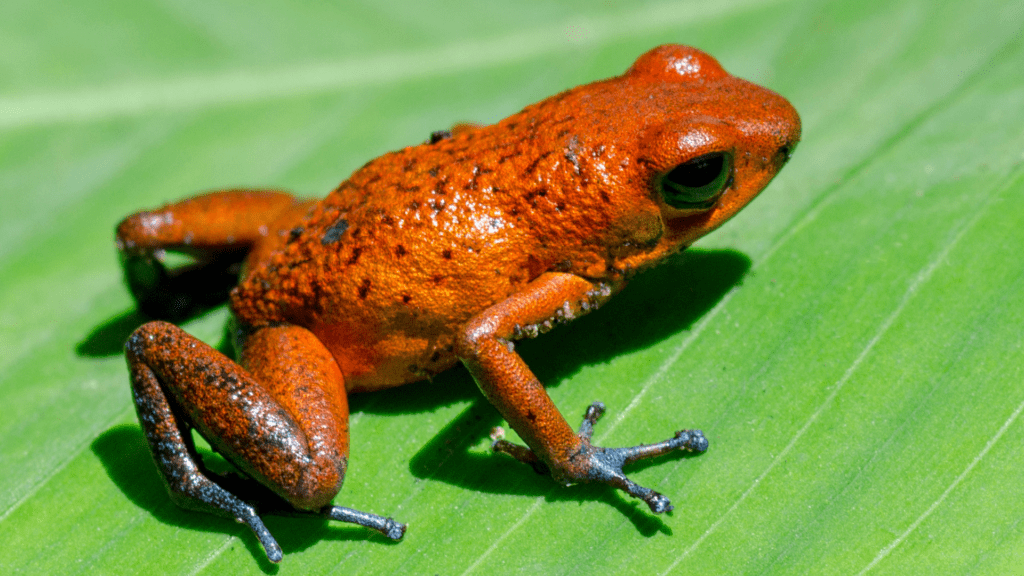The California Tiger Salamander (Ambystoma californiense) is a large and striking species of mole salamander native to Northern California. Named after its geographical range, this species is known for its unique appearance, fascinating life cycle, and conservation challenges.
Scientific Classification
Kingdom: Animalia
Phylum: Chordata
Class: Lissamphibia
Order: Caudata
Family: Ambystomatidae
Genus: Ambystoma
Scientific Name: Ambystoma californiense
Physical Description
- Body Structure: Stocky build with a small head and a broad, rounded snout
- Size: Adults measure between 6 to 7 inches (15–18 cm), making them larger than most other salamanders
- Coloration: Glossy black body with prominent yellow spots and stripes, sometimes absent along the back
- Sexual Dimorphism: Males are generally larger than females and can be identified during breeding season by their swollen cloacae
- Skin Texture: Moist, shiny, and scaleless
- Eyes: Protruding brown eyes with black irises
- Tail: Long and laterally flattened, aiding in swimming
- Larval Features: Fully aquatic with greenish-grey coloration, broad caudal fins, a flat head, and three pairs of bushy external gills


Distribution
Geographical Range
The California Tiger Salamander is primarily found in California, with its range extending into six major regions: Sonoma County, the Bay Area (including Stanislaus County, western Merced County, and San Benito County), the Central Valley, the southern San Joaquin Valley, the Central Coast Range, and Santa Barbara County. It inhabits vernal pool complexes and isolated ponds in areas less prone to flooding.
Population Status and Threats
Populations of this species face significant threats, including habitat destruction due to urbanization and agriculture, as well as competition from invasive species like the American bullfrog. The Santa Barbara County population has been listed as endangered since 2000, and the Sonoma County population since 2003. In 2004, the U.S. Fish and Wildlife Service designated the Central distinct population segment (DPS) as threatened.
Habitat
Primary Habitats
The California Tiger Salamander thrives in diverse terrestrial habitats, including:
- Annual Grasslands: Open terrains for foraging and movement.
- Open Woodlands: Lightly forested areas providing moisture and cover.
- Oak Savannas: Transitional zones between grasslands and forests.
- Low-elevation Coniferous Forests: Moist environments at lower elevations.
Breeding Habitats
During winter and early spring breeding seasons, the species migrates to aquatic environments like ponds or lakes. These water bodies are critical for larval development, which occurs in water before juveniles transition to land. Conservation of both terrestrial and aquatic habitats is vital for the species’ survival.

Breeding
Breeding and Migration Behavior of California Tiger Salamander
Breeding in California tiger salamanders occurs after the first rains of late fall and early winter, marking the onset of the wet season. During this time, the salamanders begin their journey to the nearest pond for reproduction, which can span up to 1.3 miles and take several days. This migration typically happens at night when the ground is moist from rainfall, making it a nocturnal event.
Once they arrive at the pond, females lay their eggs, either in small clusters or individually, on submerged surfaces like stems and leaves. The eggs hatch within 10 to 14 days, and the larvae begin their development. The larval period usually lasts for 3 to 6 months, although some larvae may experience “overwintering,” extending their developmental phase into the following year, up to 13 months. This discovery has important management implications, especially when aquatic habitats are altered, as it directly impacts the larvae’s survival and transformation.
California tiger salamander larvae feed on small invertebrates, including tadpoles, and once their pond dries, they resorb their gills, develop lungs, and venture out in search of a burrow. The metamorphosis phase is crucial for their survival, as they transition from aquatic life to land.
Reproduction
Breeding for the California tiger salamander occurs annually, typically between December and February, marking their reproductive season. Females reach sexual maturity at the age of 4 to 5 years, and they breed during this period. In a typical reproductive event, a female will breed an average of 1.4 times and produce around 8.5 offspring that survive to metamorphosis. This results in approximately 12 lifetime metamorphic offspring per female.
The mating behavior of these salamanders involves males arriving at the breeding sites earlier than females, staying for a longer period (37 to 44.7 days), while females remain for only 10 to 11.8 days. After mating, females lay eggs about 2 mm in diameter, which are typically placed on submerged vegetation in the water.
The incubation period for the eggs is relatively short, lasting around 2 to 4 weeks. After hatching, the larvae undergo a developmental phase lasting 4 to 5 months. During the summer, they complete their metamorphosis and transition from aquatic larvae to terrestrial adults.
California tiger salamanders can live up to 15 years, with their lifespan depending on successful breeding and the availability of suitable habitats throughout their lives.
Behavior and Adaptations
Shelter: Not strong burrowers; rely on abandoned ground squirrel burrows. They also use burrows created by gophers and other small mammals, as these provide stable humidity levels and protection from extreme temperatures and predators.
Activity: Primarily underground, emerging only for breeding. Their subterranean lifestyle helps them conserve moisture and avoid predation. During dry seasons, they remain inactive for extended periods, reducing metabolic activity to survive unfavorable conditions.
Movement: Adults travel at ~50.8 m/h, while juveniles move slower (~30.9 m/h). Migration distances vary depending on habitat fragmentation, and individuals may take several nights to reach breeding sites. Some adults return to the same burrows after breeding, demonstrating strong site fidelity.
Rain Dependence: Do not breed in years with low rainfall. Since their breeding cycle is closely linked to seasonal precipitation, prolonged droughts can severely impact population numbers. In years of adequate rainfall, their movement increases significantly, as they depend on moist conditions to prevent dehydration during migration.

Diet and Feeding Habits
Adult California Tiger Salamanders are opportunistic carnivores, feeding on:
- Invertebrates
- Insects
- Small mice
- Tadpoles
- Small snails
Their diet varies based on seasonal availability and habitat conditions. They rely on their strong sense of smell to locate prey, often ambushing small organisms using a rapid strike mechanism. Unlike some amphibians that actively chase prey, these salamanders remain motionless and wait for prey to come within striking distance.
Larvae initially consume microscopic organisms, then shift to tadpoles and aquatic invertebrates. They feed every 2–3 days, adjusting their feeding frequency based on water temperature and prey availability. In nutrient-rich environments, larvae may exhibit cannibalistic behavior, preying on smaller or weaker individuals to increase their survival chances.
Lifespan and Predators
Lifespan: 12–15 years in the wild, though survival rates vary depending on habitat conditions, predation pressure, and climate fluctuations. In protected environments with fewer threats, some individuals may live slightly longer. Their longevity is supported by their underground lifestyle, which helps them avoid many surface-level dangers.
Predators: Include American bullfrogs, California red-legged frogs, skunks, garter snakes, and ground squirrels. Young salamanders and larvae are particularly vulnerable to aquatic predators such as fish and larger amphibians. Terrestrial adults face threats from birds of prey, raccoons, and domestic cats in urbanized areas. Habitat fragmentation also increases exposure to predators by forcing them to travel longer distances in search of suitable breeding sites.
Interesting Facts
- California Tiger Salamanders require both terrestrial and aquatic habitats for survival.
- Their tails contain toxic substances that can be lethal if ingested by predators.
- They were previously classified as a subspecies of the Tiger Salamander before being designated as a separate species.
- These salamanders spend most of their lives underground, using abandoned burrows of other small animals.
- Unlike true aestivation, which involves metabolic dormancy, their underground lifestyle is more of a survival strategy.
- They develop lungs as their aquatic habitats dry up, allowing them to transition to terrestrial life.
- During migration, they only travel at night to avoid dehydration and predators.
- They can detect chemical cues in the environment, helping them locate breeding ponds.
- Some individuals exhibit site fidelity, returning to the same breeding pond year after year.
- The presence of non-native predators like bullfrogs has significantly contributed to their population decline.
- Their breeding success is highly dependent on seasonal rainfall, making them vulnerable to climate change.
- They are capable of regenerating lost limbs, a trait common among many salamanders.
- Despite their endangered status, they have gained popularity in the pet trade, raising concerns about illegal collection.
Conservation Status and Threats
The California Tiger Salamander is protected under state and federal laws due to habitat loss and predation by non-native species like bullfrogs. Conservation statuses:
- Threatened: Main populations are classified as threatened due to habitat destruction and fragmentation
- Endangered: Populations in Sonoma and Santa Barbara counties are listed as endangered
- Conservation Efforts: Recovery plans, such as the Santa Rosa Conservation Strategy, are in development but not yet implemented
Conclusion
The California Tiger Salamander is a remarkable species facing significant conservation challenges. With proper efforts and awareness, these unique amphibians may be preserved for future generations. Their increasing popularity as pets highlights the need for responsible conservation practices. Preserving their natural habitats is crucial to ensuring their survival.
faq’s
1. What is the scientific name of the California Tiger Salamander?
The scientific name of the California Tiger Salamander is Ambystoma californie
2. Where is the California Tiger Salamander found?
This species is native to California, primarily in grasslands, woodlands, and vernal pools.
3. What do California Tiger Salamanders eat?
Adults feed on invertebrates, small insects, snails, and even small mice, while larvae consume microscopic organisms and tadpoles.
4. How long do California Tiger Salamanders live?
They have a lifespan of approximately 12-15 years in the wild.
5. Why are California Tiger Salamanders endangered?
Habitat loss, climate change, and predation by non-native species such as bullfrogs contribute to their declining population.
6. Can California Tiger Salamanders regenerate lost limbs?
Yes, like many salamanders, they have the ability to regenerate lost limbs.
7. How do California Tiger Salamanders reproduce?
They migrate to temporary ponds during the breeding season, where females lay eggs on submerged vegetation.
8. Are California Tiger Salamanders poisonous?
Yes, their tails contain toxic substances that can be harmful if ingested by predators.
9. Do California Tiger Salamanders make good pets?
While they are sometimes kept as pets, their endangered status raises ethical and legal concerns regarding their collection and captivity.
10. What conservation efforts are in place to protect them?
Conservation plans include habitat restoration, breeding programs, and legal protections to prevent habitat destruction and illegal collection.

